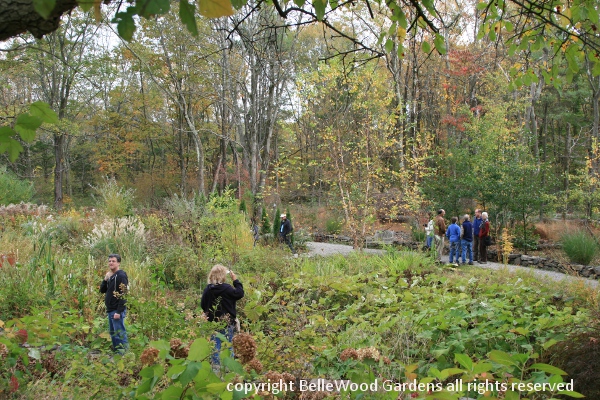
.
If you have any comments, observations, or questions about what you read here, remember you can always Contact Me
All content included on this site such as text, graphics and images is protected by U.S and international copyright law.
The compilation of all content on this site is the exclusive property of the site copyright holder.
Any day spent in a garden is better than a day which is not. I've looked at gardens on beautiful sunny days, overcast, even rainy ones, in the dark by flashlight, and have even welcomed people to my garden when there's snow on the ground. So clearly, in a garden is where I like to be. My garden, public gardens, gardens that belong to friends . . . . and heretofore-unknown-to-me gardens are always good for that little frisson of the unexpected. How does one get invited to the private gardens of unknown people? That's easy. The Garden Conservancy holds Open Days. People across the country agree to open their gardens to the public - not all the time, or even once a week. The Conservancy hears about interesting gardens. Someone makes a visit. The invitee picks a date or dates when the garden is expected to be especially interesting. Writes a short history and description. The Garden Conservancy prepares a directory that is available to members and may be purchased by non-members. Check location and date, and see what catches your interest. A modest $5 gains admittance to a garden. Mostly the gardens are open from late spring through summer and early autumn, with regional variations from east to west, north to south. And then there can be an outlier There's a garden that's open today, late in October.

Clearly, the Garden at Federal Twist in Kingwood Township, New Jersey has attracted a number of visitors, even one from Maryland (or so I heard.) The day is overcast, I'm here in the afternoon and there are numerous people wandering the paths. What created the buzz for today? Surely the only other open day, June 29th, would seem more appropriate to visitors. There was an article in the New York Times just a few days prior. The Good-For-Nothing-Garden it was named, and the on-line version included several images.
An aside: it would behove the Conservancy to have a copy of the Open Days directory on the table where people paid their entrance fee. Clearly, anyone with tickets know what was what. Some of those who found out about the event through the newspaper article didn't have a clue. I overheard one man seriously telling his companion that gardens were only opened today, and only in New Jersey.
So what did I find that makes this a garden worth mentioning? Excellent use of ornamental grasses and tall herbaceous plants. Clever use of perennials allowed to go to seed rather than beheaded, opps, let's politey say "dead-headed." On the downside the garden is somewhat repetitive and could use more diversity. There were just a couple of monkshood, Aconitum sp. in bloom where a larger mass would be appropriate. Other shrubs for late flowers / fruiting would add interest to the admittedly late season.
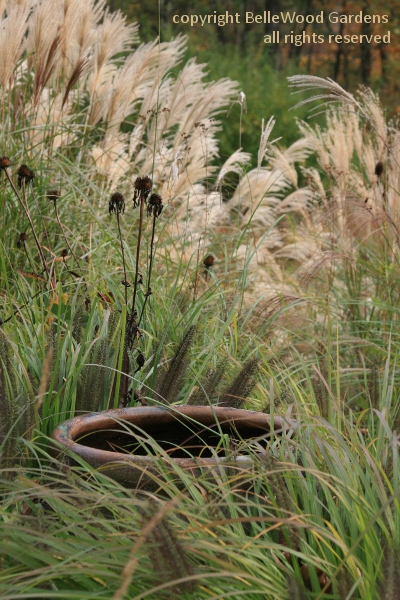
It's a garden gone to seed. The grasses are indeed ornamental at this time of year and will remain attractive until beaten down by snow. There are some perennials in flower but many of the tall and stately prairie plants have gone to seed.
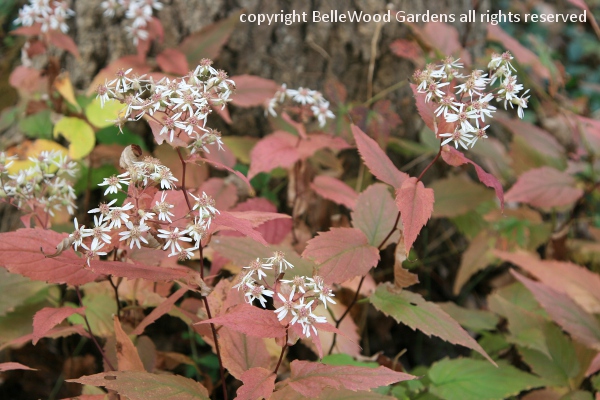
Fall is for asters. There's a nice group of our native white woods aster, Aster divaricatus, its leaves turning the same crushed raspberry color as the center of the pollinated flowers.
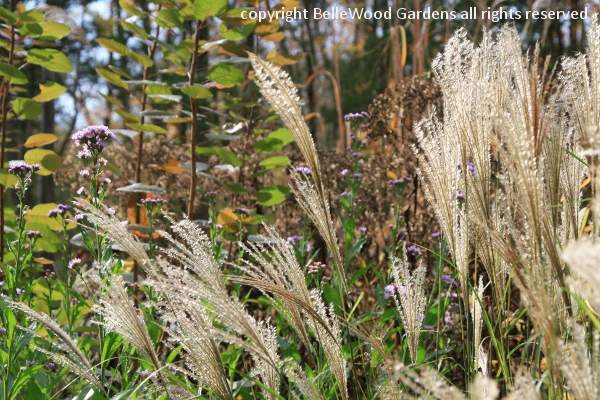
A break in the clouds and the seed heads of maiden grass, Miscanthus sinensis, seem to glow as they capture the sunlight. The purple that you see off to the side and behind them, that's Aster tataricus 'Jin Dai', named for the botanic garden outside Tokyo, where it was selected. Selected for its stately size, you ask? Well, no. Actually because at 5 feet in height it is short, at least compared to the species. Both the grasses and this aster repeat again, and again, and again throughout the garden.
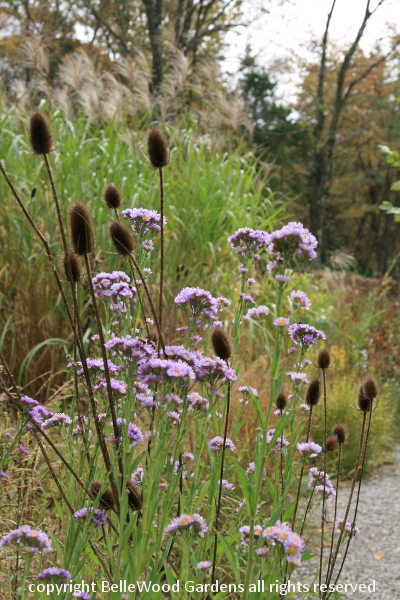
Here the aster is paired with teasel, whose black-brown seed heads and architectural form make a fine contrast to the aster's flowers, one that's noticeable from a distance and even more refined seen closer up.
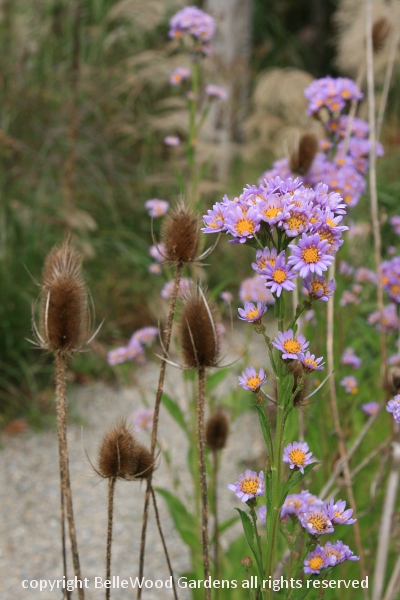
.
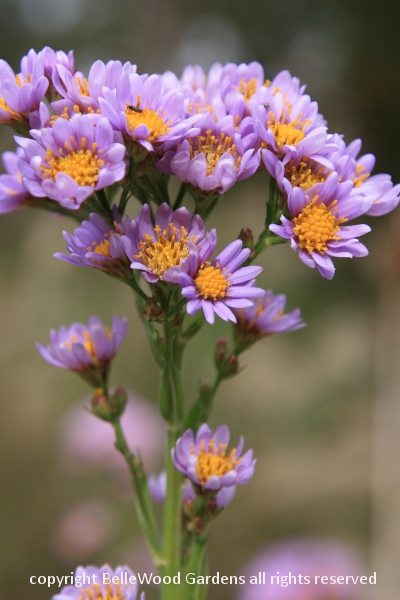
Lovely to see flowers in such prime condition. There have already been frosts in parts of Kingwood Township, not sure about here.

The color palette for this garden is muted at this time of year. With the swathes of grasses gone to beige and brown a line of conifers seem startling in their verdant green.
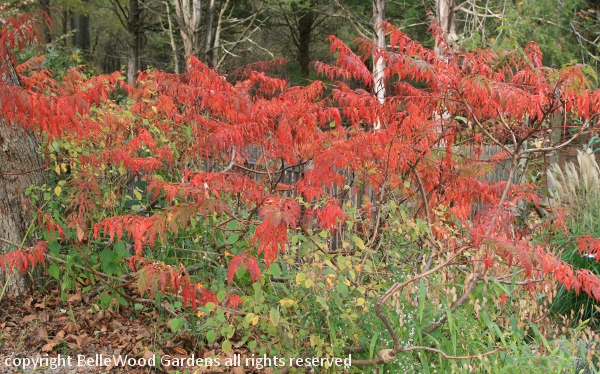
As they transition from active chlorophyll factories the foliage of this cut leaf form of the staghorn sumac, Rhus typhina 'Laciniata', turns flaming red prior to dropping and becoming compost.
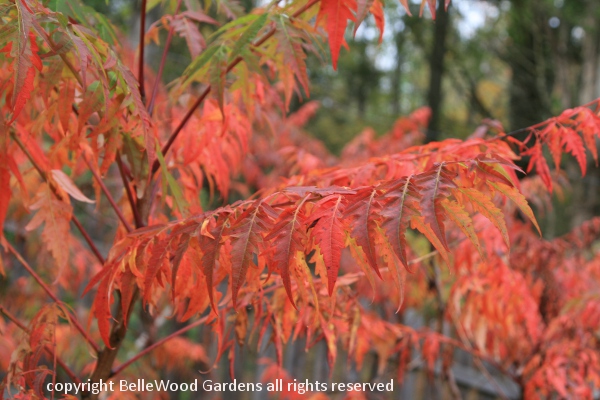
.
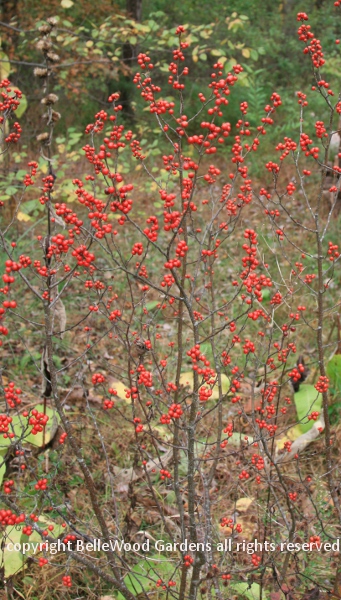
And of course there is color from the fruits of some shrubs, like the sealing wax red of Ilex verticillata. Better yet, unlike summer's soft fruits that are quickly eaten the birds won't touch these holly berries until quite late in winter, which means the gardener gets to enjoy them for several months.
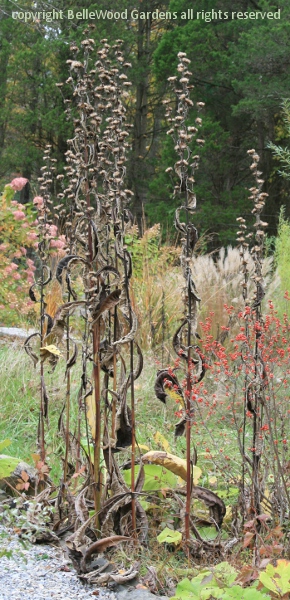
Herbaceous plants too are preparing for winter dormancy with leaves gone sere and dry,
their flowers, having served their purpose of attracting pollinators, now gone to seed.

.
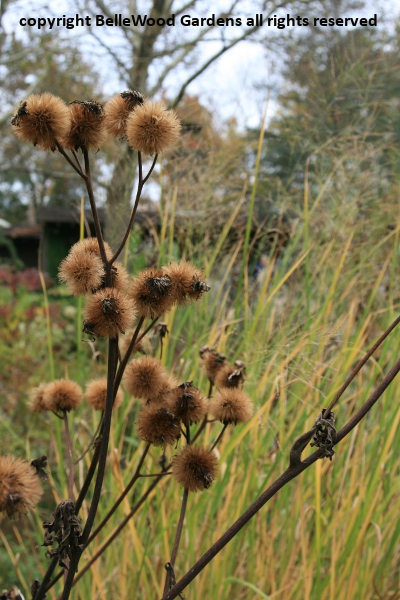
Ligularia,

and liatris.
The seeds not only make new plants, they're food for small birds. Goldfinches, for example, prefer liatris seeds to anything you might purchase for a feeder.
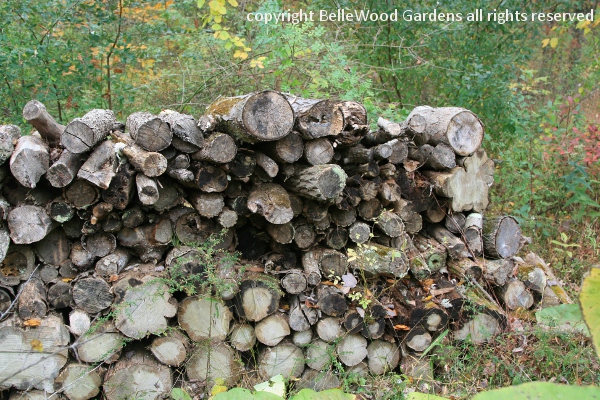
Left unburned down at the garden's edge a woodpile provides shelter for small critters, summer and winter. Insects will colonize the logs. Fungi will grow. The wood eventually decays and returns nutrients to the soil, for other plants and trees to grow as the cycle continues.
If, like me, you enjoy making garden visits, then be sure to - at least - look for next year's Open Days directory. Better yet, become a member and support their work in preserving notable gardens that have fallen on difficult times. A garden open this year may or may not be open the next. But there will always be fascinating gardens to be visited.
Back to Top
Back to October 2013